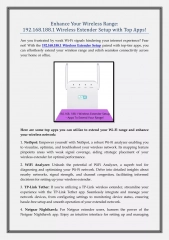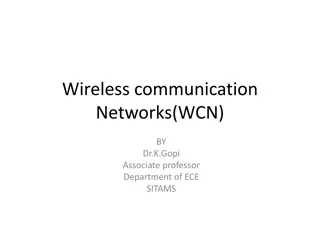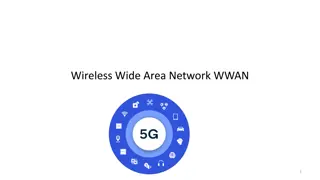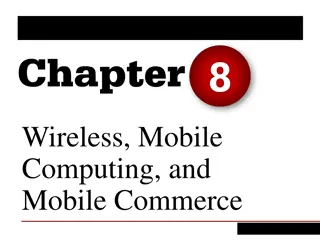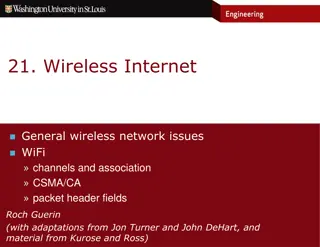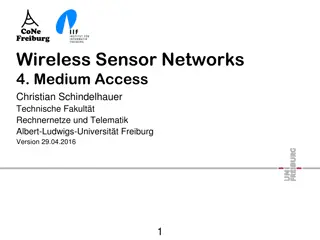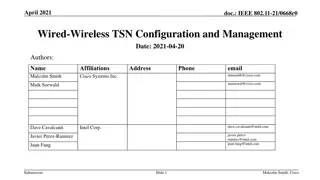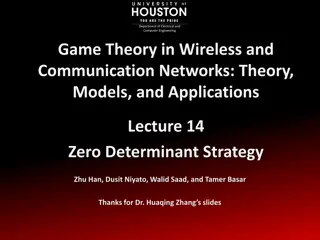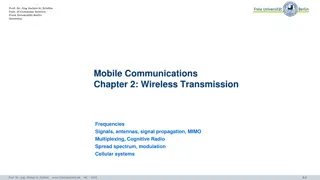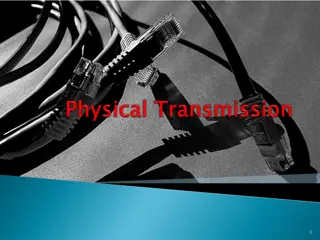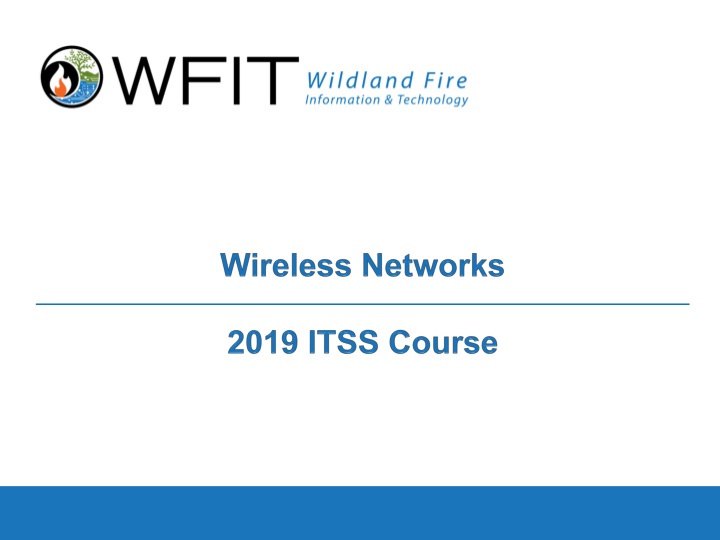
Wireless Network Components and Technologies
Explore the various components of a wireless network, including access points, routers, bridges, and clients. Learn about the OSI model, wireless standards, and different types of network equipment such as routers with firewall capabilities, access points without WAN ports, and wireless bridges. Discover how wireless technology extends LAN segments and connects devices like laptops, tablets, printers, and IoT devices. Dive into the specifics of wireless standards like 802.11a and their operating frequencies, speeds, and ranges.
Uploaded on | 0 Views
Download Presentation

Please find below an Image/Link to download the presentation.
The content on the website is provided AS IS for your information and personal use only. It may not be sold, licensed, or shared on other websites without obtaining consent from the author. If you encounter any issues during the download, it is possible that the publisher has removed the file from their server.
You are allowed to download the files provided on this website for personal or commercial use, subject to the condition that they are used lawfully. All files are the property of their respective owners.
The content on the website is provided AS IS for your information and personal use only. It may not be sold, licensed, or shared on other websites without obtaining consent from the author.
E N D
Presentation Transcript
System Access Needed by an ITSS System Access Needed by an ITSS System Access Needed by an ITSS
Equipment Wireless Router Access Point Wireless Bridge LAN Switch (higher port density) Wireless Client (endpoints) 2
Wireless Router One WAN port Gateway to Internet Service Provider (ISP) DSL modem provided by ISP Dynamic Host Configuration Protocol (DHCP) Limited LAN ports (4 ports is common) Firewall capability 4
Access Point One LAN port connection No WAN port (can not connect to ISP) Extends your LAN through the radio spectrum Power over Ethernet (PoE) IEEE 802.11(a, b, g, n, ac) standard 5
Wireless Bridge Point to Point implementation that extends one LAN segment to another LAN segment Instead of using cables, Radio waves are used as a conduit Consist of more than one wireless station Layer 2 of the OSI model using MAC addresses Does not see IP addresses, therefore not routable Ex: Connects two adjacent building in a campus 6
Wireless Clients Laptops Tablets Mobile Phone Printers and Internet-of-Things (TVs, Refrigerators, Cars, Home Security System, smart speakers) 7
802.11a Operates in the 5.15GHz to 5.35GHz radio spectrum. Speed: Up to 54Mbps (actual throughput is closer to 22Mbps) Range: 115 feet indoor Less prone to interference. More expensive. Because 802.11b/g/n and 802.11a use different radio technologies and portions of the spectrum, they are incompatible with one another. 11
802.11b Operates in the 2.4GHz radio spectrum Speed: Up to 11Mbps Range: 115 feet indoor Prone to interference (it shares airspace with cell phones, Bluetooth, security radios, and other devices). Least expensive wireless LAN specification 12
802.11g Operates in the 2.4GHz radio spectrum. Speed: Up to 54Mbps Range: 125 feet indoor Prone to interference (it shares airspace with cell phones, Bluetooth, security radios, and other devices). 13
802.11n Operates in the 2.4 or 5GHz radio spectrum Speed: Up to 700Mbs Range: 230 feet indoor Because 802.11b and 802.11g use the same radio technologies and portions of the spectrum, they are compatible with one another. 14
802.11ac (Wave 2) Bandwidth: Up to 2.34 Gb/s (multi-station) or 1.3 Gb/s (single-station) Range: 115 feet indoor Beamforming (targets clients) Frequency range: 5.0 GHz Multi-user MIMO Up to 8 Spatial Streams 15
802.11ac 16
Exercise 1 - UniFi AC MESH UniFi AC setup as Access Point Extend your Cat5 LAN with WLAN IP addresses of your WLAN is in the same broadcast domain as your wired LAN ISP router will provide DHCP and DNS services Setup your UniFi Controller software Test all your clients for connectivity 17
Exercise 2 - Bridge UniFi Mesh AP as Bridge Team up with another group One Team will be Base Camp and other Team will be Remote Camp Reverse Team roles 18

